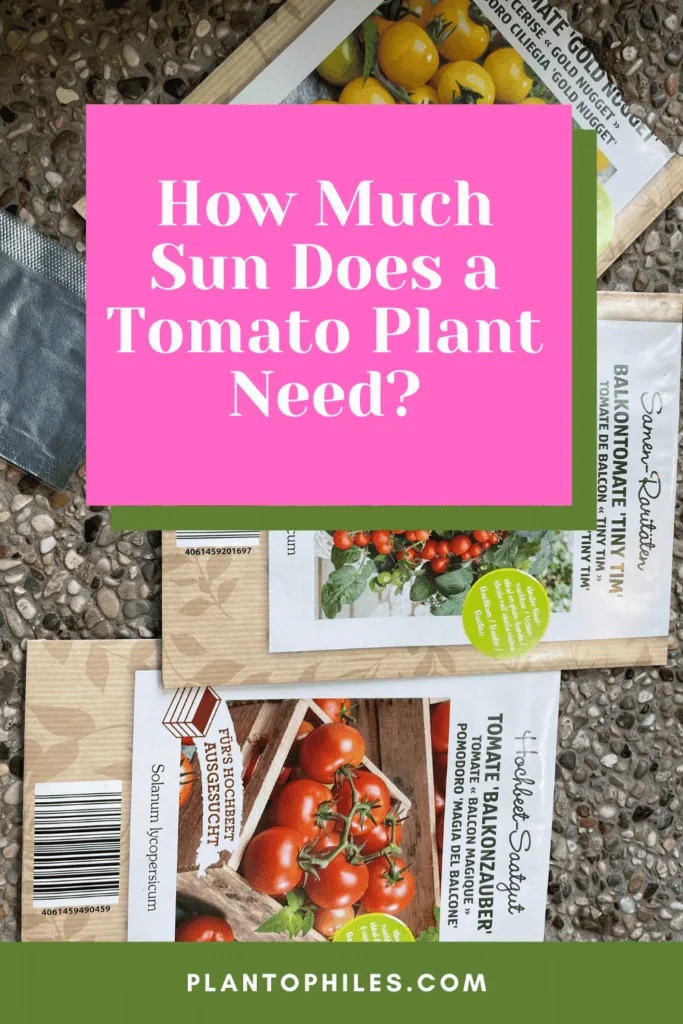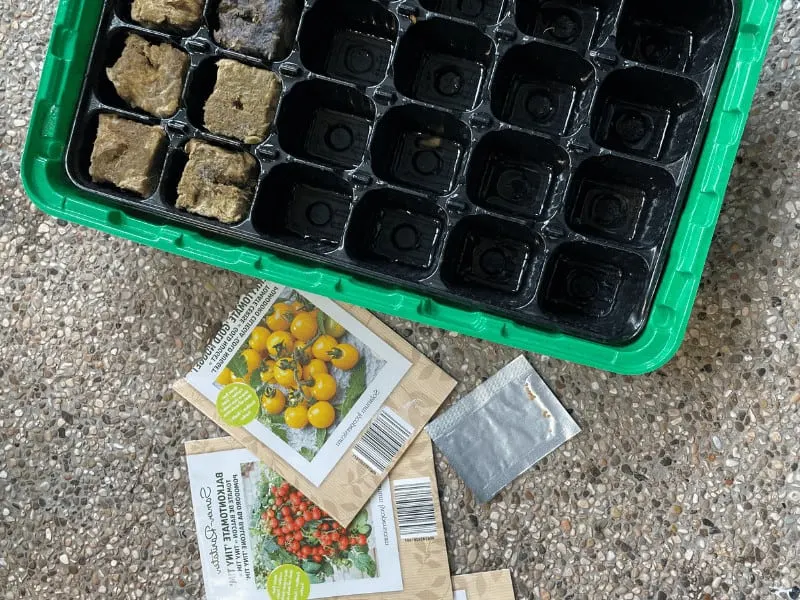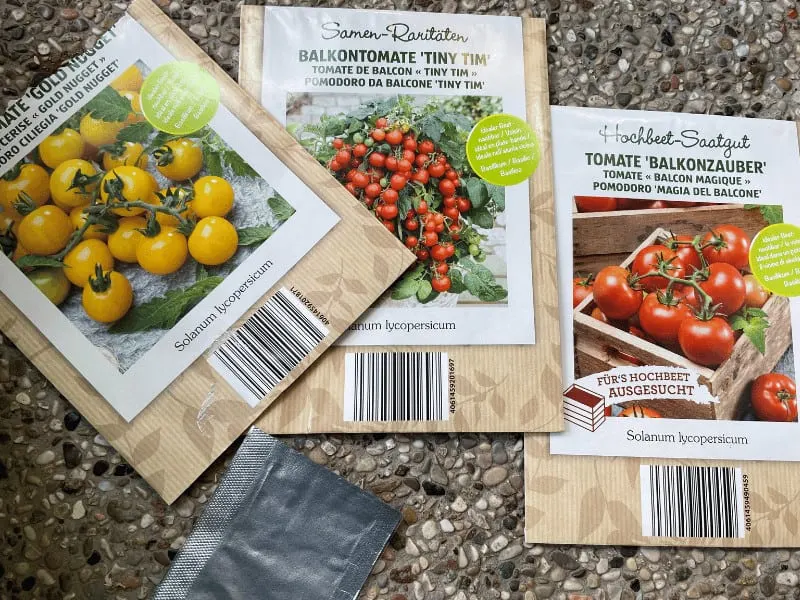How much sun do tomatoes need? Even if tomatoes are fruits, technically, they are the number one most common garden vegetable grown in America.
While these plants are much loved for their ability to produce delicious, sweet, and tangy tomatoes, they can be picky about light.
Most plant tags say “full sun,” but what does that mean, and what are the correct lighting requirements for tomatoes?
Table of Contents
How Much Sun Does a Tomato Plant Need?
Tomatoes need at least 6 hours of direct sun. Tomatoes in cold climates need 8 to 10 hours of direct sunlight. Aim for 7 or 8 hours of direct sun for hot climates and provide light shade in the afternoon.

How To Plant Tomatoes, So They Get Enough Sunlight
Planting tomatoes can be tricky based on the region you live. If you want to avoid the problem of too much or too little sun, growing tomatoes in a pot is a great idea.
There are even upside-down patio tomato planters, which means no cages or stakes are required.
Be sure that if you are planting in a pot, you choose a spot where they will receive direct sunlight for at least six to eight hours each day.
Then, you can move them in the afternoon if it’s too hot for them. Look for a high-quality potting mix for vegetables, encouraging healthy growth.
Provide Light Afternoon Shade for Hot Climates
However, if you live in a very hot climate (consistently 90-95° Fahrenheit or above), you should plant tomatoes in a spot that gets light shade in the afternoon or add fine-mesh row covers to provide a little bit of protection.
Row covers will also help keep birds and some insects from devouring your tomatoes before you can devour them yourself.
Use Fertilizer and Compost
If you plant in the soil, dig about one foot deep and add some well-rotted compost, aged manure, and good fertilizer if you want an extra boost.
Let the mixture sit in the hole for about a week to set and break down before planting.
Tomatoes can also be planted with 2/3 of their stem buried—it helps them grow stronger roots and makes for a healthier plant.
Different Types of Tomatoes
Determinate Tomatoes
Determinate tomatoes are commonly known as “bush” varieties.
This type grows about two or three feet tall and will fruit and produce many different tomatoes at once. They don’t need cages or stakes, making them perfect for smaller spaces or as a patio plant.
They’re also perfect for canning because they produce many tomatoes very quickly.
But you won’t be eating tomatoes all summer long if you choose this variety since they generally only fruit at the beginning of the growing season.


Indeterminate Tomatoes
Indeterminate tomatoes are space hogs and require stakes and cages for support, as they grow quite big and can spread out quickly.
These are known as “vining” varieties and will produce fatty, healthy fruit all summer.
While most indeterminate tomatoes are perfect for slicing or eating in sandwiches, they require extra TLC.
They can be grown on a porch or patio, but they won’t be able to spread out and thrive as they would in open soil.
Staking and caging are also extremely important, as it helps keep the fruit off the ground and gives the plant vital support.
Related: Indeterminate Tomatoes
General Plant Care for Tomatoes
Many people think tomatoes may be a trendy plant that is “easy” to grow, but they require vigilant care.
They can be prone to disease if not properly cared for, so giving them the sunlight, water, and nutrients they need to flourish and thrive is essential.
How to Water Tomatoes
Tomatoes should be watered copiously early in the morning so the extra moisture will evaporate by the afternoon.
Water deeply so the roots can soak it up and support healthy growth. You don’t want to get stuck with root rot, which will damage the plant badly.
Avoid Having Wet Leaves Overnight
If you must water in the afternoon or at night, only water at the plant’s base, and avoid getting the leaves wet.
A tomato plant with damp leaves overnight is prone to diseases like early blight.
Even high-humidity climates can cause this crippling disease, so keeping the leaves as dry as possible is vital, particularly overnight.
Water One to Two Inches Each Week
A good rule of thumb is to water about one to two inches weekly. If your tomato plants are in a container, they’ll need more water. Check to make sure they’re adequately hydrated every day.
Add some fertilizer if your plant looks leggy or needs another boost.
If you’re in a hot climate, water deeply and often, or try irrigation or a sprayer to ensure the soil stays evenly moist.
Related: Tomato fertilizer
How to Prune a Tomato Plant and Encourage Healthy Growth
How to prune a tomato is typically based on the variety and cultivar being grown. Vining varieties should be cared for by pinching off “suckers.”
Suckers are the new growth of small stems and leaves growing between the main stem and branches.
It’s a good idea to thin these out to allow more life-giving sunlight to reach all areas of the plant.
Whether growing bush variety or vining variety, take the time to prune some of the lower leaves.
Look for the leaves growing from the base of the plant to about 12 inches upwards, and gently prune them to keep the plant healthy and thriving.
You can also read about tomato plant spacing for better tomato plant growth.
Frequently Asked Questions
Do tomato plants need full sun?
Tomatoes need full direct sunlight for at least 6 hours.
How come my tomato plants won’t grow any flowers or fruit?
If your plants won’t flower or fruit, the problem is most likely that they’re not receiving enough sunlight. Remember, tomatoes are sunlight hogs—they need at least six to eight hours daily. Keep in mind that direct sunlight doesn’t mean extreme heat every day. If it’s too hot, it could prevent the plant from flowering and growing tomatoes. Be sure to water regularly and add fertilizer or compost for an extra boost.
How far apart should tomatoes be planted?
Bushy varieties (determinate) should be grown two feet apart. For the vining varieties (indeterminate), plant about three feet apart. Also, don’t forget to support vining variety cultivars! Tie branches gently to stakes or cages using twine or soft string.
Conclusion
If you live in a cooler climate, shoot for eight to ten hours of sun each day. In hotter climates, aim for 8-10 hours. To successfully grow tomatoes, provide at least 6 hours of direct sunlight.

Daniel has been a plant enthusiast for over 20 years. He owns hundreds of houseplants and prepares for the chili growing seasons yearly with great anticipation. His favorite plants are plant species in the Araceae family, such as Monstera, Philodendron, and Anthurium. He also loves gardening and is growing hot peppers, tomatoes, and many more vegetables.


